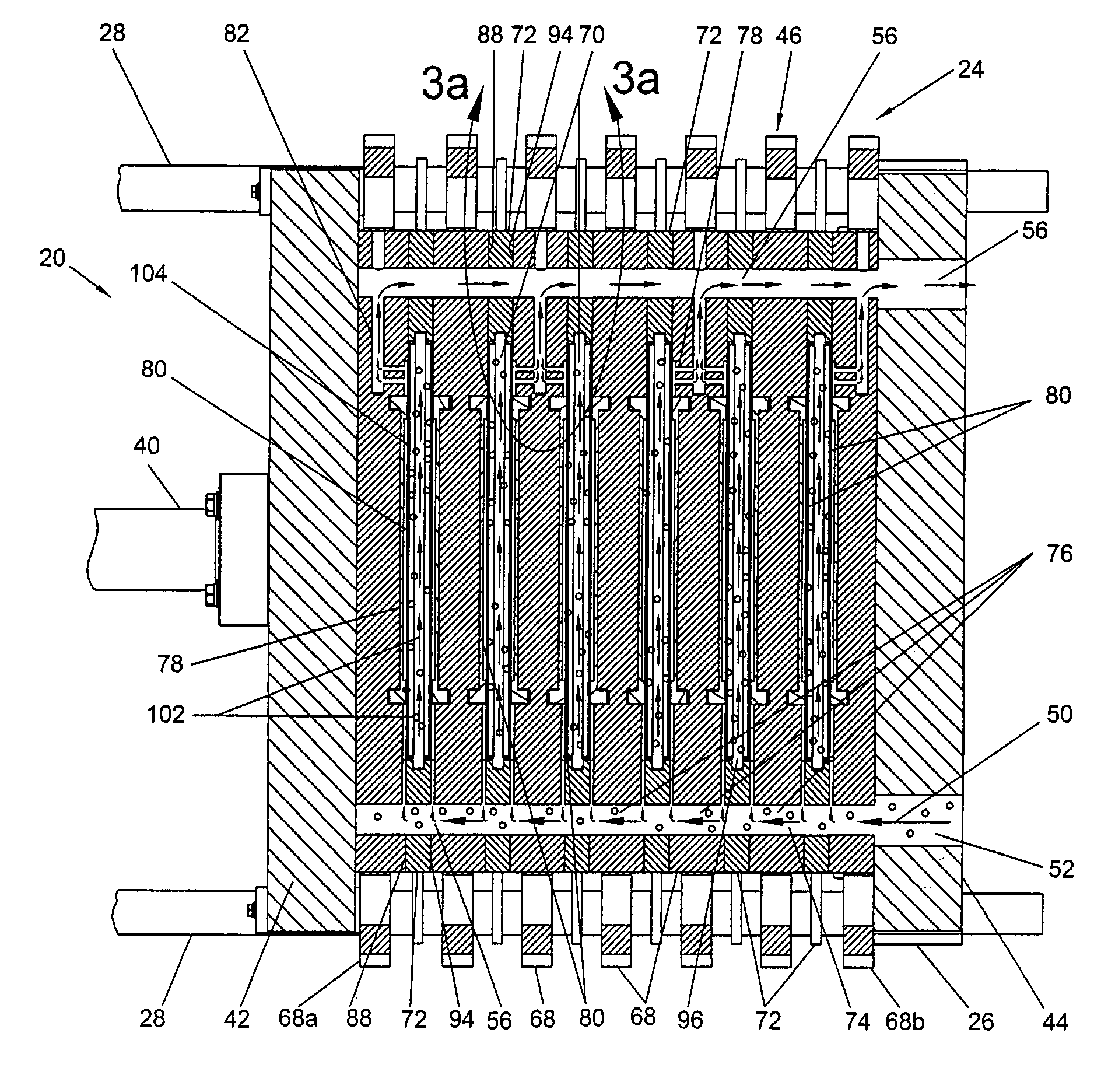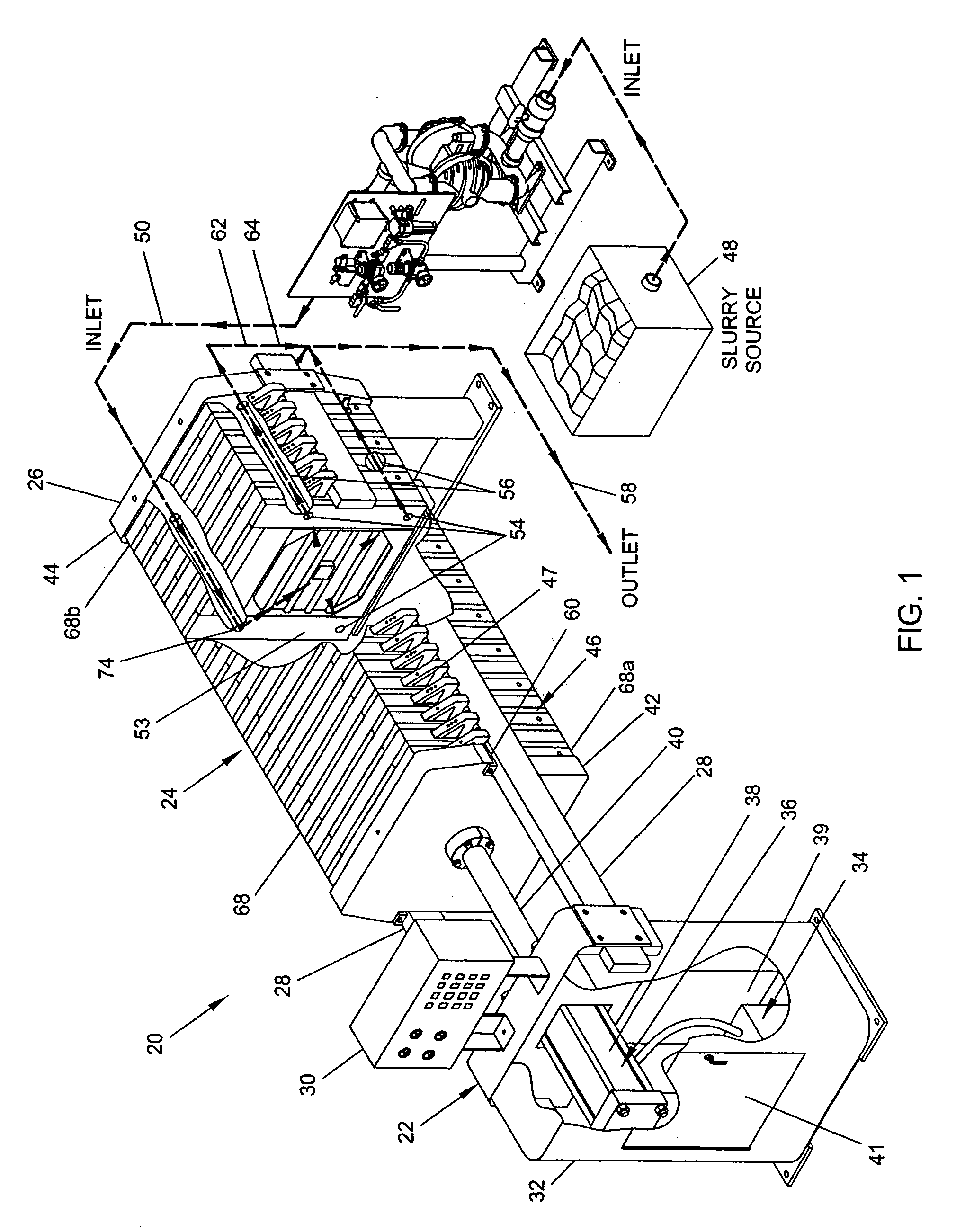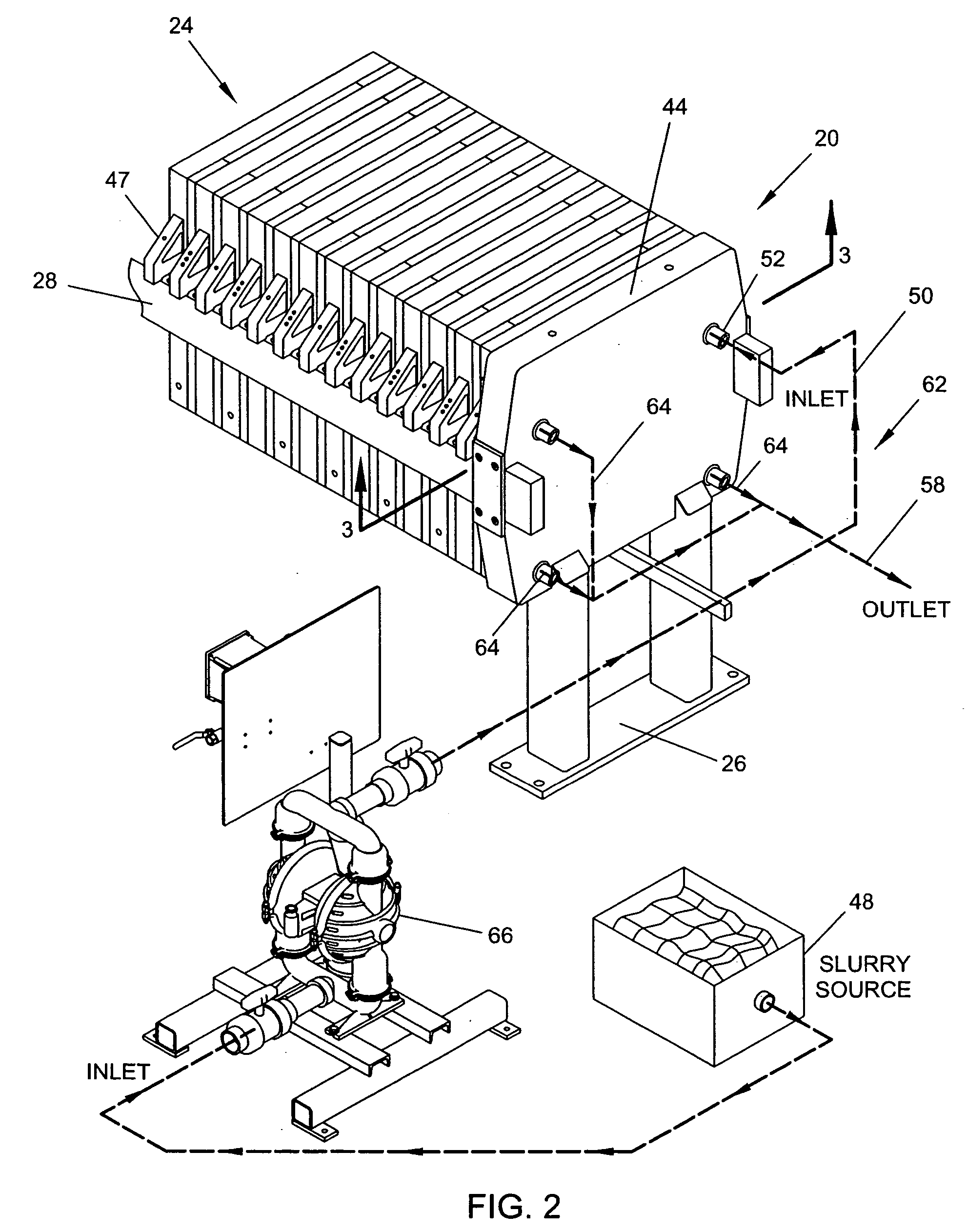Filter plate assembly for filter
a filter plate and filter plate technology, applied in the direction of filter separation, moving filter element filters, separation processes, etc., can solve the problems of excessive downtime, complex fully automated filter cleaning systems employed with conventional filter presses, and inability to pass liquid through the filter elemen
- Summary
- Abstract
- Description
- Claims
- Application Information
AI Technical Summary
Benefits of technology
Problems solved by technology
Method used
Image
Examples
Embodiment Construction
[0037] A filter press is used to separate liquid and solid components from a liquid-solid mixture, such as a slurry or sludge. For example, the filter press described herein is generally referred to by the reference numeral 20 and can be used to filter a process fluid, industrial waste, municipal waste, or perform component separation in other settings. The filter press 20 may also be used in a variety of other industries.
[0038] During the filtering process, solids accumulate and form a particulate cake within filter chambers defined by the filter press 20. The filter press 20 preferably includes a mechanism for rapidly discharging the cake from the filter chamber, without requiring the filter plates to be entirely separated from one another, as is described in greater detail below. For example, in one arrangement the cake can be removed from the filter press by using a movable closure to permit access to the filter chamber. The methods and structures disclosed herein are described...
PUM
| Property | Measurement | Unit |
|---|---|---|
| Length | aaaaa | aaaaa |
| Pressure | aaaaa | aaaaa |
| Width | aaaaa | aaaaa |
Abstract
Description
Claims
Application Information
 Login to View More
Login to View More - R&D
- Intellectual Property
- Life Sciences
- Materials
- Tech Scout
- Unparalleled Data Quality
- Higher Quality Content
- 60% Fewer Hallucinations
Browse by: Latest US Patents, China's latest patents, Technical Efficacy Thesaurus, Application Domain, Technology Topic, Popular Technical Reports.
© 2025 PatSnap. All rights reserved.Legal|Privacy policy|Modern Slavery Act Transparency Statement|Sitemap|About US| Contact US: help@patsnap.com



